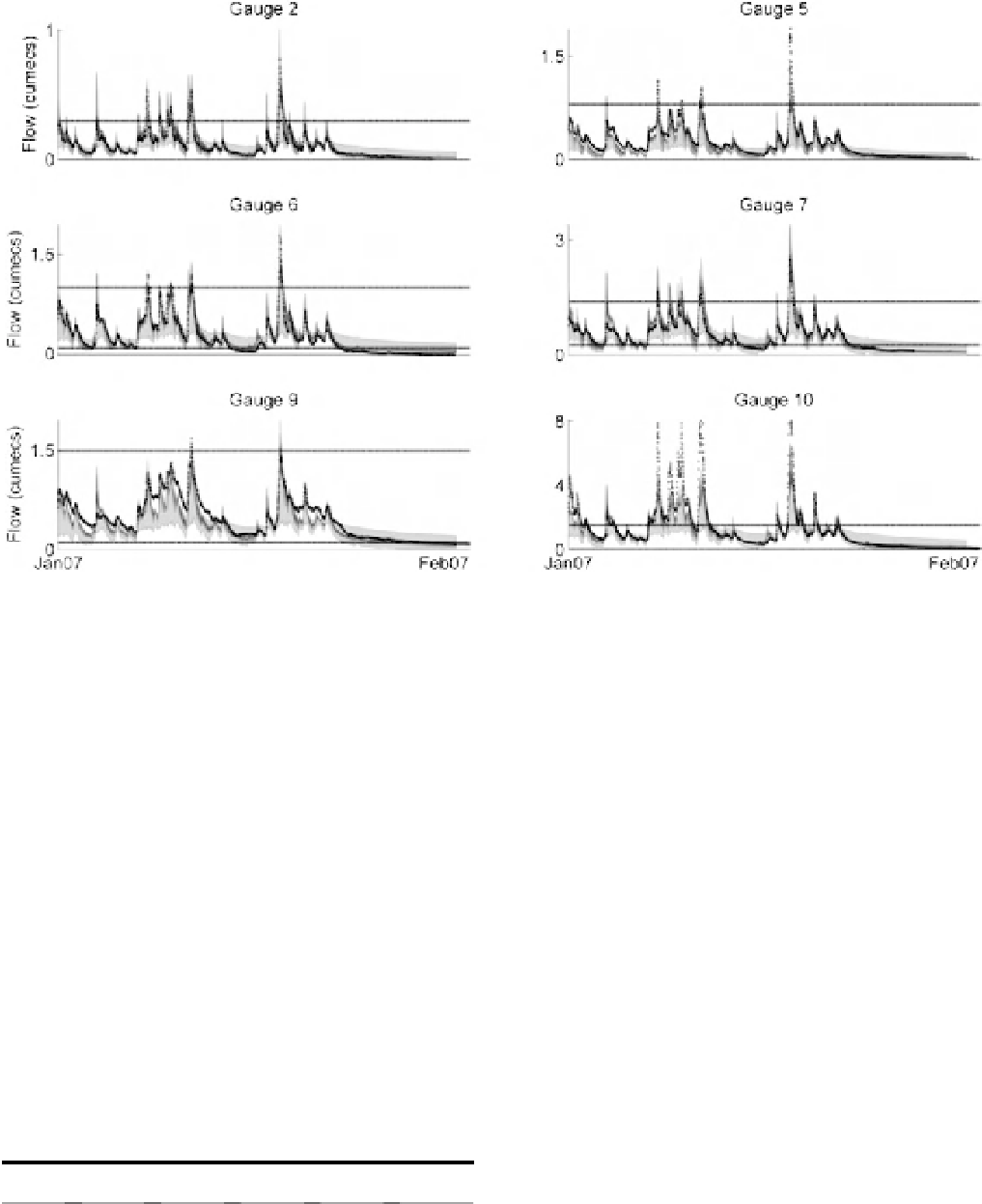Environmental Engineering Reference
In-Depth Information
Fig. 3.13
Prediction uncertainty bounds for January 2007.
performances achieved together with Figure 3.13
support the view that BFI
HOST
is an effective re-
sponse index.
Figure 3.14 shows the predicted impacts of
these land management changes on runoff at
gauge 10. The median relative differences associ-
ated with the scenarios are given in Table 3.4:
changes in total runoff within the period 1 January
2007 to 31March 2007, and changes in the highest
observed peak flow during the period (18 January).
The afforestation delayed the highest peak arrival
by 15 minutes (one simulation time step), and the
soil degradation scenario did not show any differ-
ence in peak flow arrival time.
This study illustrated a simple method of con-
ditioning hydrological model parameters on prior
information in order to simulate runoff under
current conditions and future land management
scenarios. The prior information about current
conditions, in this case, came almost entirely from
the BFI
HOST
index from a national database of
soil types. The conditioned model was shown to
simulate observed flows to an impressive level of
accuracy. The approach described in this paper has
allowed impacts of land use management inter-
ventions to be predicted. Two scenarios were in-
vestigated: (i) returning the catchment to a pristine
woodland landscape through afforestation; and
(ii) further degradation of the soil associated with
overgrazing. Median values show significant im-
pacts: for example, the changes in the largest
observed flood peak at the catchment outlet were
a 12% reduction with afforestation and an 8%
increase due to overgrazing.
Table 3.3
Nash-Sutcliffe efficiency coefficients
(1 January 2007 to 31 March 2007)
Gauge 2 Gauge 5 Gauge 6 Gauge 7 Gauge 9 Gauge 10
0.84
0.70
0.85
0.78
0.80
0.65


